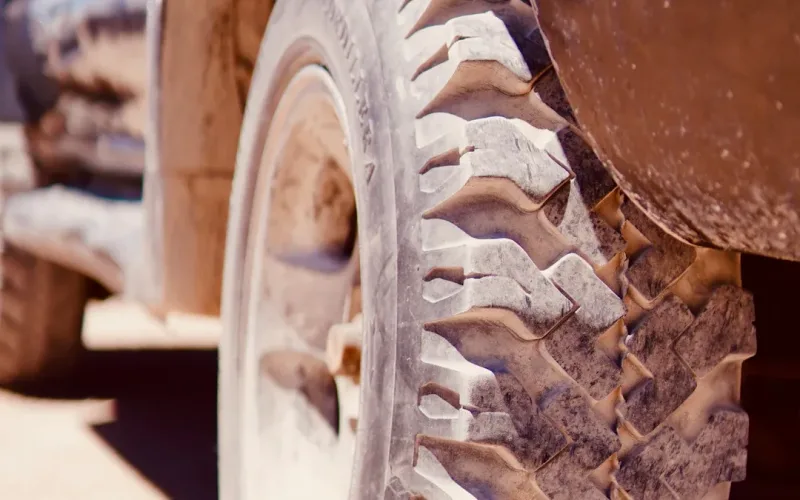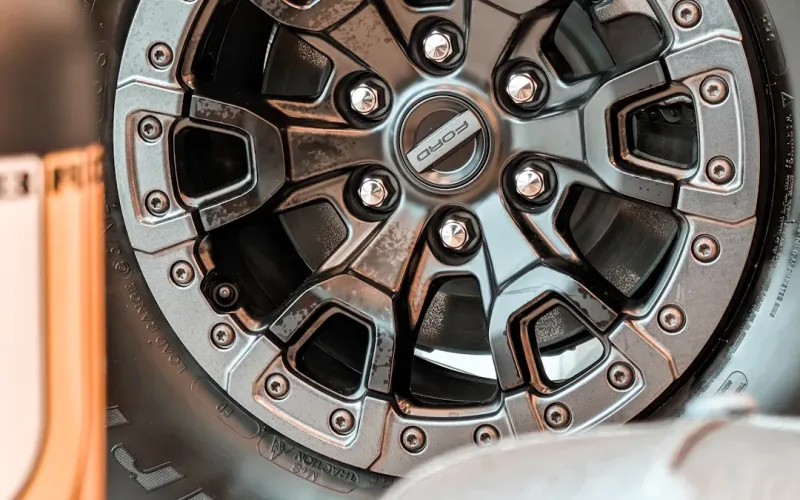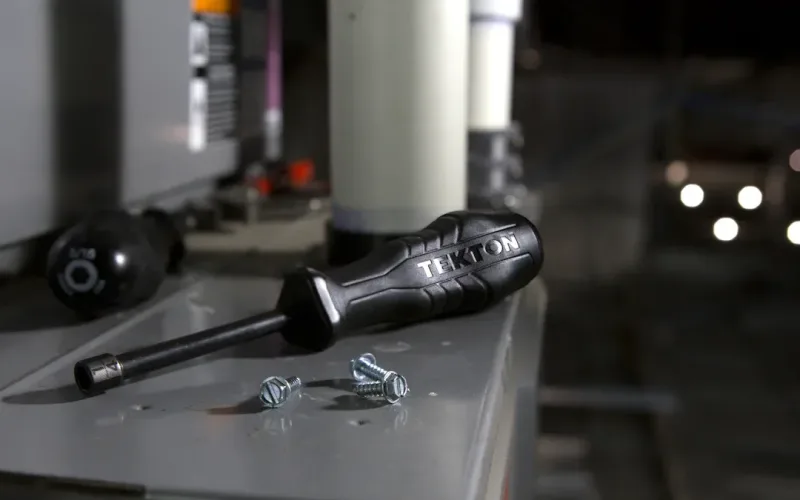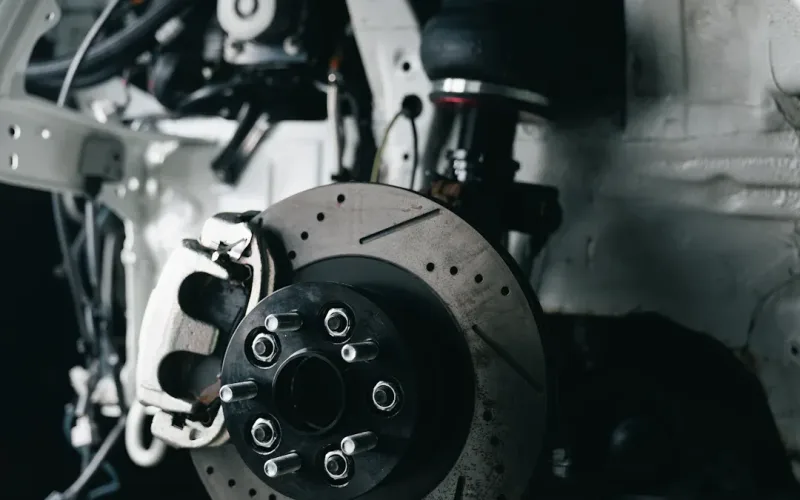

admin1
June 5, 2025
Balancing Weights for Rotating Equipment Explained

Balancing weights play a critical role in ensuring the smooth operation of rotating machinery. When systems remain unbalanced, they experience uneven forces that reduce efficiency and increase wear. This imbalance can lead to reduced performance, lower maneuverability, and longer landing rolls in aviation equipment. For industrial machines, it can result in vibrations that compromise safety and shorten the lifespan of components.
Proper balancing maintains stability by keeping the center of gravity within optimal limits. This stability prevents dangerous scenarios like difficulty recovering from stalls or entering spins. As a result, equipment operates more reliably, with improved safety and enhanced performance. By addressing these issues, balancing weights contribute to the longevity of rotating systems and reduce the risks associated with excessive loading during high-stress operations.
“Aircraft performance and handling characteristics are affected by the gross weight and center of gravity limits. If every pilot were to understand and respect this fact, general aviation accidents could be reduced dramatically.”
Balancing ensures your equipment functions at its best, reducing downtime and extending its service life.
Importance of Balancing Rotating Machinery

Effects of Unbalanced Systems on Performance
When a rotating system is unbalanced, it disrupts the smooth operation of machinery. This imbalance occurs when the mass distribution around the shaft is uneven, causing the center of gravity to shift. As a result, the machinery experiences excessive vibrations, which can lead to reduced efficiency and performance. For example, unbalanced systems often consume more energy because the motor works harder to compensate for the irregular motion. This inefficiency not only increases operational costs but also accelerates wear and tear on components.
Studies have shown that unbalanced systems significantly impact performance metrics. For instance, vibration responses under different conditions reveal how imbalance affects the stability of rotating machinery. Additionally, misalignment in the shaft introduces extra reaction forces, further degrading performance. By addressing these issues through proper balancing, you can ensure your equipment operates at peak efficiency.
Safety Risks Associated with Imbalance
Imbalance in rotating equipment poses serious safety risks. Excessive vibrations can weaken structural components over time, increasing the likelihood of mechanical failures. In industrial settings, this can lead to catastrophic incidents, such as equipment breakdowns or even workplace accidents. For example, a study on condition monitoring highlights how early detection of faults, such as imbalance, can prevent malfunctions and reduce safety risks.
In process industries, identifying safety-critical equipment is essential to mitigate risks. A risk-based approach prioritizes machinery that poses the highest safety threats, ensuring timely maintenance and repairs. By maintaining proper balance, you minimize the chances of unexpected failures, creating a safer working environment for everyone involved.
Benefits of Proper Balance for Equipment Longevity
Balancing rotating machinery extends the lifespan of your equipment. When the system is balanced, it operates smoothly, reducing stress on critical components like bearings, shafts, and couplings. This not only prevents premature wear but also lowers maintenance costs over time. For instance, automatic balancing machines play a crucial role in ensuring the efficiency and durability of rotating systems.
The advantages of balancing weight go beyond individual components. Improved balance reduces energy consumption, making your operations more environmentally friendly. Additionally, advancements in balancing technology, such as precision sensors and real-time monitoring, enhance the reliability of your machinery. By investing in proper balancing techniques, you protect your equipment from unnecessary damage and ensure it remains operational for years to come.
Tip: Regularly inspect and balance your machinery to prevent costly repairs and downtime. A small investment in maintenance can save you significant expenses in the long run.
Methods for Balancing Rotating Equipment
Balancing rotating machinery involves several techniques, each tailored to specific operational needs. By understanding these methods, you can ensure your equipment runs smoothly, minimizing wear and maximizing efficiency.
Static Balancing
Static balancing focuses on ensuring the center of gravity of a rotating body aligns with its axis of rotation. This method is ideal for components that rotate at low speeds or remain stationary during balancing. You achieve static balance by redistributing mass to eliminate uneven weight distribution. For example, when balancing a fan blade, you might add or remove weights to achieve equilibrium.
Several technical standards guide static balancing practices. These include:
- API (American Petroleum Institute): Offers guidelines for balancing procedures and tolerances for rotating components.
- ISO (International Organization for Standardization): Provides standards for balancing tolerances and performance testing.
- ANSI (American National Standards Institute): Supplies requirements for balancing practices in pumps, turbines, and other rotating equipment.
Static balance is crucial for preventing vibrations that can damage machinery. Regular checks and adjustments help maintain optimal performance, especially in systems with low rotational speeds.
Dynamic Balancing
Dynamic balancing addresses imbalances that occur during rotation. Unlike static balancing, this method considers both the mass distribution and the forces generated by motion. Dynamic balance ensures smooth operation at high speeds, reducing vibrations and improving precision. You achieve this by adjusting weights while the equipment rotates, allowing for real-time corrections.
Industry case studies highlight the effectiveness of dynamic balancing methods. The table below compares AI-adjustable masses with traditional techniques:
| Metric | AI Adjustable Masses | Traditional Methods |
|---|---|---|
| Vibration Levels | Consistently low | Periodic spikes |
| Downtime | Minimal | Significant |
| Maintenance Costs | Lower | Higher |
| Precision | High | Moderate |
Dynamic balancing is essential for high-speed machinery, such as turbines and compressors. It minimizes downtime and maintenance costs while ensuring consistent performance. Techniques like one-plane dynamic balancing are particularly useful for systems requiring adjustments in a single rotational plane.
Two-Plane Balancing
Two-plane balancing takes dynamic balancing a step further by addressing imbalances across two planes. This method is ideal for larger or more complex rotating bodies, such as industrial fans or automotive crankshafts. By analyzing phase information, you can distribute weights across two planes to achieve optimal balance.
Technical literature compares two-plane balancing with other methods:
| Balancing Method | Description | Limitations |
|---|---|---|
| Two-Plane Balancing | Utilizes phase information for balancing across two planes. | Requires five trial runs, which can be inefficient compared to other methods. |
| Influence Coefficient Method | Balances using both amplitude and phase information. | More efficient with fewer trial runs compared to phase-only methods. |
| Phase-Only Balancing | Balances using only phase information. | Lacks residual data for trim balancing and cannot be used for one-shot balancing in future efforts. |
| Single-Plane Balancing | Balances using only phase information for a single plane. | Requires three trial weights, making it less efficient than multi-plane methods. |
| Multi-Plane Balancing | Balances using phase information across multiple planes. | Similar limitations to single-plane methods when using only partial information. |
Two-plane balancing provides greater precision for complex systems. It reduces vibrations and enhances the dynamic balance of rotating bodies, ensuring smoother operation and longer equipment life.
Modal Balancing
Modal balancing is a specialized technique used to address complex imbalances in rotating machinery. Unlike static or dynamic balancing, modal balancing focuses on the vibration modes of the system. By targeting specific modes, you can reduce vibrations more effectively and improve the overall stability of your equipment.
How Modal Balancing Works
Modal balancing analyzes the natural frequencies of a rotor system. Each rotor has unique vibration modes, which are influenced by its design and operating conditions. When you apply modal balancing, you adjust the mass distribution to counteract the forces causing vibrations in these modes. This approach ensures smoother operation, especially for systems with intricate designs or high-speed rotations.
Tip: Modal balancing is particularly useful for machinery with multiple vibration modes, such as turbines, compressors, and large industrial fans.
Advantages of Modal Balancing
Modal balancing offers several benefits that make it a preferred choice for advanced applications:
- It targets specific vibration modes, reducing vibrations more precisely than traditional methods.
- It improves the efficiency of balancing procedures by considering nonlinearities in rotor systems.
- It enhances the reliability of machinery, minimizing wear and extending the lifespan of components.
Recent research highlights the role of nonlinear normal modes (NNMs) in improving modal balancing techniques. NNMs allow you to account for nonlinearities, such as bearing clearances and Hertz contact forces, which affect rotor response. This advanced approach not only improves balancing efficiency but also enables parameter estimation and damage detection, ensuring optimal performance.
Applications of Modal Balancing
You can use modal balancing in various industries where precision and reliability are critical:
- Power Generation: Turbines and generators benefit from reduced vibrations, ensuring consistent energy output.
- Aerospace: Aircraft engines and components require precise balancing to maintain safety and performance.
- Manufacturing: High-speed machinery, such as milling machines and conveyor systems, operate more smoothly with modal balancing.
By adopting modal balancing, you can address complex imbalances that other methods may overlook. This technique ensures your equipment runs efficiently, reducing downtime and maintenance costs.
Note: Modal balancing requires specialized tools and expertise. Regular inspections and advanced analysis techniques, such as NNMs, can help you achieve the best results.
Advanced Techniques for Balancing the Machine
Trial Weight Method
The trial weight method is a straightforward yet effective approach to balancing the machine. It involves adding small weights to a rotating component to identify the optimal position for counterbalancing weights. You start by preparing to balance the equipment by inspecting the system for any visible issues. Once you set up your equipment, you attach trial weights to the rotor and measure the resulting vibrations. By analyzing these measurements, you can determine the precise location and amount of correction weights needed.
This method is particularly useful for systems with simple designs or when advanced tools are unavailable. However, it requires careful attention to detail. Always inspect before you balance to ensure the machinery is free of defects that could affect the results. The trial weight method helps you achieve balance efficiently, reducing vibrations and extending the lifespan of your rotating equipment.
Automated Balancing Systems
Automated balancing systems revolutionize the process of balancing the machine. These systems use advanced sensors and algorithms to detect imbalances in real-time and apply corrections automatically. They eliminate the need for manual adjustments, saving time and improving accuracy.
For example, operational data highlights the advantages of automated systems across various industries:
| Facility Type | Technique | Efficiency Gain | Impact |
|---|---|---|---|
| Supermarket Chain | Demand-based defrost cycles | 27% less runtime | $460k annual savings |
| Pharma Storage | Humidity-linked cooling | 33% load reduction | 41% fewer outages |
| Office Complex | Occupancy sensors | 18% lower usage | LEED Gold certification |
Automated systems not only enhance efficiency but also reduce downtime and operational costs. They are ideal for high-speed machinery where precision is critical.
Precision Tools and Sensors
Precision tools and sensors play a vital role in modern balancing techniques. These devices provide accurate data on the distribution of weights and the dynamic behavior of rotating components. High-quality sensors ensure that measurements are consistent and reliable, enabling you to make precise adjustments.
Key performance metrics for sensors include:
- Accuracy: Reflects the true state of the system.
- Precision: Ensures repeatable measurements.
- Latency: Measures the time delay in data recording.
- Reliability: Evaluates long-term stability.
- Clinical relevance: Assesses the practical impact of data.
By using precision tools, you can achieve a higher level of balance, reducing wear and improving the efficiency of your equipment. These tools are especially valuable when preparing to balance complex systems or when working with high-speed machinery.
Tip: Always calibrate your sensors and tools regularly to maintain their accuracy and reliability.
Applications of Balancing Weight Across Industries

Power Generation Equipment
Balancing plays a vital role in ensuring the efficiency and reliability of power generation equipment. Turbines, generators, and other rotating machinery in power plants require precise weight distribution to maintain optimal performance. When imbalances occur, they lead to vibrations that reduce energy output and increase wear on critical components. Regular balancing minimizes these issues, allowing the equipment to operate smoothly and extend its lifespan.
Experts in machinery analysis use advanced techniques to detect even slight instabilities in turbine rotors. These assessments prevent efficiency losses and costly setbacks. Rotor vibration analysis is particularly effective for diagnosing mechanical issues before they escalate. By monitoring rotor health and addressing imbalances promptly, you can reduce downtime and maintenance costs significantly. This proactive approach ensures your power generation systems remain reliable and productive.
“Ongoing balancing throughout the turbine’s lifecycle ensures optimal performance and extends its lifespan.”
HVAC Systems
Balancing is equally important in HVAC systems, where airflow dynamics and pressure levels determine the system’s efficiency. Proper balancing ensures that air circulates evenly, reducing energy consumption and improving indoor comfort. Technicians specializing in HVAC systems use advanced tools like airflow measurement devices and pressure gauges to identify discrepancies and optimize performance.
Several reports highlight the importance of balancing in HVAC systems:
- TAB reports: These documents help identify performance issues and deviations from design specifications.
- Role of Technicians: Skilled professionals use their expertise to fine-tune airflow and ensure system efficiency.
- Instrumentation: Accurate testing relies on specialized tools, such as pressure gauges and airflow meters.
By addressing imbalances in HVAC systems, you can enhance energy efficiency, lower operational costs, and create a more comfortable environment for occupants.
Manufacturing Machinery
Balancing weight is crucial for maintaining the precision and durability of manufacturing machinery. Equipment like milling machines, conveyor systems, and industrial robots rely on smooth operation to produce consistent results. Imbalances in these systems can lead to vibrations that compromise accuracy and increase wear on components.
Effective balancing techniques, such as differential weighing and rotor vibration analysis, help detect and correct instabilities. These methods ensure machinery operates at peak efficiency, reducing downtime and extending its service life. Timely monitoring of rotor health further minimizes maintenance costs, allowing you to focus on production goals without interruptions.
“Timely and precise monitoring of turbine rotor health can significantly reduce downtime and maintenance costs.”
Balancing weight in manufacturing machinery not only improves performance but also safeguards your investment in high-quality equipment.
Automotive and Aerospace Components
Balancing plays a critical role in the automotive and aerospace industries. In both sectors, precision and reliability are non-negotiable. Imbalances in rotating components can lead to vibrations, reduced efficiency, and even catastrophic failures. By ensuring proper weight distribution, you can enhance performance, improve safety, and extend the lifespan of critical parts.
In the automotive sector, balancing is essential for components like crankshafts, drive shafts, and wheels. Uneven weight distribution in these parts can cause vibrations that affect ride quality and fuel efficiency. Advanced balancing machines help you achieve the precision needed to minimize these issues. For instance:
- Automotive manufacturers rely on balancing to improve fuel economy and reduce wear on tires and suspension systems.
- High-performance vehicles demand even greater precision to maintain stability at higher speeds.
In aerospace, the stakes are even higher. Components like turbines, compressors, and rotors must operate flawlessly under extreme conditions. Imbalances in these parts can compromise the safety and performance of an aircraft. With the rise in air travel, the demand for precision balancing has grown significantly. You’ll find that:
- Single-station balancing machines are preferred for their high accuracy in aerospace applications.
- Multi-station machines are used in industrial settings where throughput is a priority.
Tip: Regular balancing checks can prevent costly repairs and ensure compliance with safety standards in both industries.
By prioritizing balancing, you not only improve operational efficiency but also contribute to a safer and more sustainable future for transportation. Whether you’re working on a car engine or an aircraft turbine, precision balancing is the key to success.
Balancing rotating machinery is essential for ensuring optimal performance and safety. Proper balance reduces vibrations, improves efficiency, and extends the lifespan of equipment. By addressing imbalances, you protect critical components from unnecessary wear and prevent costly breakdowns.
Selecting the right balancing method for your equipment is equally important. Techniques like static, dynamic, and modal balancing cater to different operational needs. Understanding your machinery’s requirements allows you to achieve precise adjustments and maintain smooth operation.
Regular maintenance plays a key role in preventing issues caused by unbalanced systems. Inspections and timely corrections ensure your equipment remains reliable and productive. As highlighted in industry reports:
The types of evidence to be collected, how it is to be obtained and selected, the extent to which it comprises all of the available material, how its quality is to be checked, and whether it is relevant and reliable, are crucial issues. It must also be clearly established that the collection of evidence is complete, and that it was collected in accordance with the pre-defined criteria and without bias, in order to ensure that it is truly representative of the performance of the test method or strategy.
By prioritizing balancing weight and maintenance, you safeguard your machinery and enhance its operational reliability.
FAQ
What is the purpose of balancing weights in rotating machinery?
Balancing weights ensure the even distribution of mass in rotating equipment. This reduces vibrations, improves efficiency, and prevents premature wear on components. Proper balance enhances the safety and longevity of your machinery, making it more reliable during operation.
How often should you balance rotating equipment?
You should balance rotating equipment during regular maintenance or whenever you notice unusual vibrations, noise, or performance issues. For critical machinery, schedule inspections every six months to a year to prevent costly breakdowns.
Can you balance equipment without specialized tools?
Yes, you can use basic methods like the trial weight method for simple systems. However, advanced tools and sensors provide more accurate results, especially for high-speed or complex machinery. Investing in precision tools ensures better performance and reliability.
What are the signs of an unbalanced system?
Common signs include excessive vibrations, unusual noise, uneven wear on components, and reduced efficiency. If left unaddressed, these issues can lead to mechanical failures or safety hazards. Regular monitoring helps you detect and fix imbalances early.
Why is dynamic balancing preferred for high-speed machinery?
Dynamic balancing accounts for imbalances that occur during rotation. It ensures smooth operation at high speeds by correcting weight distribution in real-time. This method minimizes vibrations, reduces wear, and improves the precision of your equipment.





